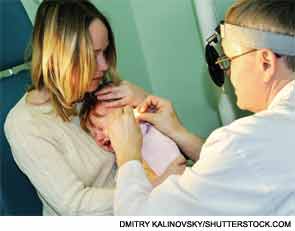“In the future, one area [PEs] could move into might be the management of some of these chronic conditions of aging, including hearing loss and dizziness,” Dr. Bhattacharyya added. “The aging population, the obesity epidemic; these are going to lead to more chronic conditions and a greater need for both diagnosis and long-term disease management.”
Explore This Issue
September 2013Impact of the Affordable Care Act
Another factor to consider when gauging the future roles of PEs in otolaryngology is the Affordable Care Act (ACA), which will provide health care benefits to an estimated 25 to 30 million previously uninsured Americans starting next year. With more patients seeking care, an increasing number of NPs and PAs may be the health care providers patients see first, instead of physicians.
“There’s going to be a glut if you will, or an initial front-loading of the whole system with patients that need to be seen,” Dr. Bhattacharyya said. “But I think it’s also one of the components of the ACA that patients can now have NPs and even PAs as their primary provider, so there could be a network of patients that develops into a following for a clinically excellent physician assistant or nurse practitioner in an ENT group.”
Dr. Kennedy agrees that more access to health care coverage may very well spike demand for health care services. “The evidence suggests that the insured population sees physicians more readily than if they’re not insured, so assuming that more people are insured, I think we can say that office visits are going to increase,” he said.
“I think one of the big hurdles that otolaryngology is going to face is how do we best incorporate physician extenders so that they can really help us specifically where the need is going to be,” said Dr. Bhattacharyya. “We need to get more physician assistants and nurse practitioners able to make ENT specific diagnoses, do the otolaryngologic consultation. By 2020, it’s going to be hitting us. We’ve got about three to five years to prepare, maybe a little less.”

Leave a Reply